TOUR
ISRAEL
Discovering Jerusalem, the Western Wall, and Samuel's Tomb
By
Craig von Buseck
CBN.com Contributing Writer
CBN.com
– Jesus Celebrates Passover in the Upper Room Also:
Entering the Old City Visiting
Nebi Samuel: The Tomb of the Prophet Samuel  View
a slide show from Jerusalem View
a slide show from Jerusalem
We left the courtyard of the Tomb of
David and walked down a long, narrow passageway. Eli spoke as we walked. "I remember
as a young guide in 1967, you could not reach the Old City because it was controlled
by Jordan. We would take our tours up onto the roofs of buildings to see the top
of Mount Moriah." He explained that back then Jerusalem was a divided city --
Jordan controlled one half and Israel controlled the other, and there was a dangerous
'no man's land' in between. Israel had military posts on the rooftops of buildings
on one side of the street, and Jordan had posts on the rooftops on the other side
of the street. 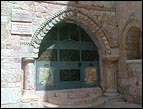 We
stopped in front of an ancient stone building with an arched doorway a dome on
the top. Pointing at the beautiful structure Eli declared, "This is the Room of
Last Supper, also known as the Upper Room. What is the first rule about Jesus?
That he was born a Jewish boy. The moment you deny that is the moment that you
deny Him to be the Christian Messiah. Jesus is recognized by Christianity to be
the Son of God and the Messiah -- which Messiah? The Jewish Messiah of course.
There is no Chinese Messiah. It is declared by Christianity that He is the Jewish
Messiah." We
stopped in front of an ancient stone building with an arched doorway a dome on
the top. Pointing at the beautiful structure Eli declared, "This is the Room of
Last Supper, also known as the Upper Room. What is the first rule about Jesus?
That he was born a Jewish boy. The moment you deny that is the moment that you
deny Him to be the Christian Messiah. Jesus is recognized by Christianity to be
the Son of God and the Messiah -- which Messiah? The Jewish Messiah of course.
There is no Chinese Messiah. It is declared by Christianity that He is the Jewish
Messiah."
As we stood in the shadow of the great stone building Eli continued.
"According to the New Testament, at the end of time -- no date is given -- all
Jews will come back to Israel waiting for Jesus to come back. And then when we
are back in Israel, Jesus will come back, and we, the Jews, will recognize Him
as the Messiah. And He is going to lead us in the final war that is going to take
place at the foot of Armageddon -- also known as Megiddo." "Now if you
want to understand Christianity you must know Judaism. The roots of Christianity
are in Judaism, period. And that's why the Old Testament is part of the Christian
Bible. If you don't know the Old Testament you can't understand Christianity.
Why am I using this site as an example of this? What does the New Testament tell
us about this place? Jesus comes here at Passover. Why? It's not that he has nothing
better to do at this particular Passover. He's not coming here for a vacation.
Jews should make a pilgrimage to Jerusalem three times a year, on the three holy
days of Succoth, Passover, and Pentecost. Even up until this time Orthodox Jews
are doing this." "Always remember, Jesus was a Jew, and all of His disciples
were Jews. Peter was a Jew -- Peter is not his name, it's a nickname. His name
is Simon. Paul was a Jew -- his name was Saul. Jesus and all His disciples were
Jews. Do you really believe that they would make a pilgrimage to Jerusalem when
Jesus was, in the eyes of the established Jews as well as the Romans, a troublemaker?
But you need to understand the role he was playing -- the role of the prophet
in the Old Testament. He was preaching against everything that He believed was
wrong. In the eye of the establishment Jeremiah and Isaiah were troublemakers
-- and Jesus was going to do exactly what they were doing, preaching to the people.
Jesus was coming to Jerusalem to take the opportunity to preach to Jews who were
coming from all over the Jewish world to Jerusalem for Passover." "Now
when Jesus and His disciples came to Jerusalem, a local Jew invited them to share
with him the first evening of Passover -- a holiday we Jews observe in memory
of the exodus from Egypt. The Jewish calendar begins with sunset, so the first
eve of Passover is already the next day. The first evening we are celebrating
the Seder. We are sitting around a big dinner table and reading a special book
that tells us the story of the exodus from Egypt, it is called the Haggadah. Who
is leading the evening? The most honorable guest, or an older member of the family.
And then we have the dinner." He looked around at the different members
of the group and then raised his hands and shrugged his shoulders. "My friend,
read the New Testament -- that's exactly what happened at the room of Last Supper.
They were having a dinner there. Jesus was comparing blood to wine, remember,
and bread to flesh. They were participating in a Seder. And when the Seder is
over Jesus is betrayed by one of his disciples and turned over to the Romans for
crucifixion." "This place is known as the room of Last Supper -- why? The
meal of the Seder became Jesus last supper. He was crucified the following day.
He didn't live long enough to have another supper." "Now in this country
we have a law. Every religion is in charge of its own shrine. The State has no
authority inside a shrine -- a mosque for the Muslims; a church for the Christians;
a synagogue for the Jews. Now this place my friends is the only place in the world
that is a Jewish shrine, King David's Tomb, a Christian shrine, the Upper Room
-- and when the Muslims conquered this country they changed both the Tomb of King
David and the Upper Room into a mosque. And it is still a mosque for the Muslims.
So this is a holy place to the Jewish people; it is a holy place to Christianity;
and it is a holy place to the Islamic religion. So who is going to be in charge
of this shrine?" He fielded several answers from the group, all of them correct.
"You are right! The State of Israel is in charge, and we named this building 'The
House of Prayer for All People.' And the State of Israel will make sure that every
person, be he a Muslim, a Christian, or a Jew is allowed to pray in this place."
"This is a good example of what the State of Israel was going to do with
all the holy sites in Jerusalem -- the holy city to Jews, Christians, and Muslims.
We want to make sure that everyone is free to pray in his or her shrine." Entering
the Old City We turned and walked further down the narrow corridor
and then around the corner. Suddenly the magnificent walls of the Old City stood
before us. To my surprise, cars were rushing in and out of the narrow gateway,
and up and down the cobble stone streets. As I gazed on the grand gate I noticed
what looked like large pockmarks in the stone. Eli explained how the wall came
to look this way. "There are eight gates into the Old City -- seven are
open and one is closed. This is the Zion Gate, which does not date back to Herod.
It is probably from the time of the Crusaders." He explained that the pockmarks
are from gun fighting between the Israelis and the Jordanians during the 1967
Six Day War. This was the gate through which the triumphant Jews entered the Old
City and rushed toward the Western Wall. 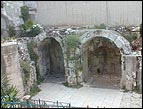 After
the cars passed through we entered the Old City through the gate and wound around
the inside wall and down the narrow streets. We paused above a long staircase
that led down twenty feet into another narrow passageway with arched openings
along the sides. Small children were running and riding their bicycles up and
down the cobblestone street. Eli explained that after Israel gained control of
the Old City they began to excavate. What we were seeing below us was the street
level from the time of Jesus in the First Century A.D. The archways were entrances
to a series of shops from an ancient marketplace. "So you see," he said with a
smile, "you Americans didn't invent the shopping mall after all." After
the cars passed through we entered the Old City through the gate and wound around
the inside wall and down the narrow streets. We paused above a long staircase
that led down twenty feet into another narrow passageway with arched openings
along the sides. Small children were running and riding their bicycles up and
down the cobblestone street. Eli explained that after Israel gained control of
the Old City they began to excavate. What we were seeing below us was the street
level from the time of Jesus in the First Century A.D. The archways were entrances
to a series of shops from an ancient marketplace. "So you see," he said with a
smile, "you Americans didn't invent the shopping mall after all."
We followed
him down the staircase and along the corridor, which eventually ran underneath
the current city. Inside this chamber Eli directed our attention to an ancient
mosaic on the wall. He explained that this mosaic was an exact replica of the
City of Jerusalem from the time of Jesus. Wherever archaeologists have excavated
their findings have matched this remarkable mosaic. Along the corridor
we came to a section with straight pillars and a recreated wooden roof. "This
was all underground," Eli declared, "and after we cleared out all the earth these
pillars were reconstructed just like putting a puzzle together. The pieces fit
exactly as they would have stood originally. Again, these were a series of shops
where merchants sold their goods. On the floor you will see sections of the original
street from the First Century." Further down the passageway we walked through
another set of doors and into hallway filled with modern shops. We paused for
several minutes to browse for souvenirs and then climbed a staircase back up to
the higher level of the Old City. 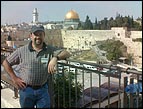 Eli
led us through a winding series of streets, all lined with shops and private residences.
We turned a final corner and descended a staircase, and suddenly , there in front
of us was the Western Wall -- Mount Moriah with the shimmering Dome of the Rock
on top. The guide had not indicated where we were going, and so the site took
me by surprise. The vista of hundreds of people praying at the foot of the retaining
walls that once supported the temple filled my heart with joy. It was a sight
I had longed to see with my own eyes for most of my life. Eli
led us through a winding series of streets, all lined with shops and private residences.
We turned a final corner and descended a staircase, and suddenly , there in front
of us was the Western Wall -- Mount Moriah with the shimmering Dome of the Rock
on top. The guide had not indicated where we were going, and so the site took
me by surprise. The vista of hundreds of people praying at the foot of the retaining
walls that once supported the temple filled my heart with joy. It was a sight
I had longed to see with my own eyes for most of my life.
I took turns
with other tour members taking photographs from a large balcony that overlooks
the immense courtyard in front of the Western Wall. Then I followed the tour guide
down the staircase and through the metal detectors at the security checkpoint
-- a common sight in Israel, especially at such an important place as this. By
now it was late Friday afternoon, and the sun would soon be setting -- the beginning
of the Sabbath. After explaining the significance of the site to the Jewish people,
Eli gave us a short time to go to the wall to pray and take photographs. People
from all over the world have traveled to Jerusalem to pray at this spot. For me
it was an intensely reverential moment as I took the prayer for my children that
I had previously written on a piece of paper and placed it between the mammoth
stones among thousands of similar petitions. I stood for several moments and prayed
at this holy site -- a moment I will never forget. I prayed for my family. I prayed
for the other people who were with me on the tour. And I prayed for the peace
of Jerusalem, and the entire region. I lingered for several minutes and
then rejoined the group as we exited the courtyard and made our way out of the
Old City. Along the way I took several photographs of the ruins surrounding Mount
Moriah. The bus was waiting for us at the street just outside the city gate. As
we were boarding one of the people who helped to organize the tour asked me what
I thought of the tour so far. "I will never be the same," I replied with
a satisfied smile, and boarded the bus. Visiting
Nebi Samuel: The Tomb of the Prophet Samuel  View
a slide show from Samuel's Tomb View
a slide show from Samuel's Tomb
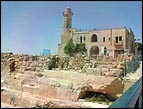 At
another point in the tour, our bus passed a military checkpoint in the eastern
section of Jerusalem and then climbed a steep hill to one of the highest points
in the area. As we approached the top Eli stood and gave us a brief introduction
to Nebi Samuel. "In Arabic, Nebi means 'prophet,' and so this site is named after
the Old Testament prophet Samuel -- the tomb of Samuel, located just on the outskirts
of Jerusalem on top of a mountain. This area used to be 'no man's land' until
1967 -- east Jerusalem was occupied by Jordan between 1948 and 1967. That included
the Old City and the West Bank. From this high mountain the Jordanians could control
the road into Jerusalem and the whole area." At
another point in the tour, our bus passed a military checkpoint in the eastern
section of Jerusalem and then climbed a steep hill to one of the highest points
in the area. As we approached the top Eli stood and gave us a brief introduction
to Nebi Samuel. "In Arabic, Nebi means 'prophet,' and so this site is named after
the Old Testament prophet Samuel -- the tomb of Samuel, located just on the outskirts
of Jerusalem on top of a mountain. This area used to be 'no man's land' until
1967 -- east Jerusalem was occupied by Jordan between 1948 and 1967. That included
the Old City and the West Bank. From this high mountain the Jordanians could control
the road into Jerusalem and the whole area."
"The story of the Modern State
of Israel really started on November 29, 1947 when the United Nations voted to
establish a Jewish state in Israel. A lot of the credit for that should go to
your president at that time, Harry S. Truman. The UN passed the partition plan
that declared that the Jews and the local Arab Palestinians should establish their
own state after the British Mandate expired on May 15, 1948. So what was called
Palestine was divided into six portions; three given to the Jews, and three given
to the local Arab Palestinians. The UN divided the portions according to ownership
of land and concentration of population." "The United Nations declared
that Jerusalem should be international -- which means it is part Arab and part
Jewish, and international in nature. The 600,000 Jews in Israel at that time accepted
the plan. We said, 'It's too bad that we lost more than half of our country to
the Hashemite Kingdom of TransJordan, because it used to be part of Israel. And
now we are losing another half of what was left. But, it's better than nothing.'
So we accepted the partition plan. Unfortunately, the Arab world rejected the
plan, and they said they wouldn't recognize it. They declared that they would
prevent the Jewish population from establishing its state according to the UN
decision." Eli continued the history lesson as we climbed up the side of
the mountain. "So we answered them, listen, what you do in your three parts is
your decision. You can do with it whatever you like. In our three parts we are
going to establish a Jewish state the moment the British leave on May 15. We hope
you do the same thing in your part, and that we can be good neighbors. Instead
of that, five Arab armies invaded Israel, supported by the Arab world -- the armies
were Lebanon, Syria, Iraq, Jordan, and Egypt. They didn't attack the State of
Israel; it didn't exist yet. They attacked the Jewish population of 600,000 people.
We didn't have an army." "So on May 14th the British left -- a day earlier
than they had planned because May 15th in 1948 was the Sabbath, a Saturday. So
we asked the British if they would be kind enough to leave a day earlier. They
were kind enough and they left on Friday. On that day in Tel Aviv, in what is
called today Independence Hall, which used to be the city hall, David Ben-Gurion
and another 37 leaders of the Jewish community in Israel declared the establishment
of the State of Israel. This is the beginning of the War of Independence." "During
this war we lost a lot of territory. In the beginning we lost almost everything.
But, once the state was established, most of the world started to support Israel.
The United States was the first and most important country to recognize Israel.
In the beginning it looked like nobody gave us a chance. But we got stronger and
stronger, and by the Spring and Summer of 1949 we were able to push out all of
the countries that occupied parts of Israel, except Jordan who occupied the West
Bank and Egypt who occupied the Gaza Strip. Then the United Nations forced a cease-fire
in 1949, and that lasted until June of 1967." "During the Six Day War in
1967 we pushed Egypt back, all the way across the Suez Canal; and Jordan all the
way across the Jordan River; and Syria down from the Golan Heights. The place
where we are now, Nebi Samuel, was occupied by Jordan until they were pushed out
in 1967." 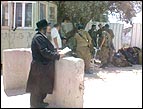 The bus came to a stop at the top of the mountain, and we exited
onto the dusty parking lot. The large structure loomed high before us at the crest
of the hill. To the left a group of soldiers were gathered under the shade of
some small trees, their automatic weapons hanging from a strap on their shoulders.
Standing only a few feet from them an Orthodox Jew, dressed in black and white
recited prayers as he faced the shrine. We climbed a short metal walkway that
led over ancient Crusader ruins scattered all around the perimeter of Samuel's
tomb. The bus came to a stop at the top of the mountain, and we exited
onto the dusty parking lot. The large structure loomed high before us at the crest
of the hill. To the left a group of soldiers were gathered under the shade of
some small trees, their automatic weapons hanging from a strap on their shoulders.
Standing only a few feet from them an Orthodox Jew, dressed in black and white
recited prayers as he faced the shrine. We climbed a short metal walkway that
led over ancient Crusader ruins scattered all around the perimeter of Samuel's
tomb.
As we approached the entrance to the tomb, an American Jew man named
Bob, who was traveling with me on the tour, pointed to the guard post and the
soldiers. "As we approached this site, we came through an Israeli soldier checkpoint,
leaving Jerusalem proper in a sense. That's where they check to make sure that
no terrorists are coming into Jerusalem. It's not perfect, but they've done a
tremendous job in the last couple of years. Here we are seeing the I.D.F. in operation."
"What does the I.D.F. stand for?" I asked. "Israel Defense Forces
-- which includes the army, navy, and an airforce, but the I.D.F. is the major
body. This is a surveillance point here -- when you look out you see that we are
up in the hills. This is an important spot in our history." "Take the high
ground, right?" I replied. "That's right," he said as we entered the tomb.
"Up here we're closer to communion with God." We paused for a moment inside the
cool stone structure before climbing the steep staircase to the top of the shrine.
Bob continued his thought. "A friend of mine, who gave me a dollar bill to give
to the beggars of Jerusalem, said to me, 'When you get to the Western Wall, say
a prayer for me, because from Jerusalem it's a local call." We laughed as we ascended
the stairs. On top of the building, several I.D.F. troops stood guard,
surveying the surrounding hills. We gathered around Eli as he continued his description
of the site. "We are not sure when the tradition started that this is where Samuel
the prophet was buried. We can't give you a receipt," he said as the group chuckled.
We were all growing to appreciate Eli's dry humor. "This is a mountain
that in many ways controls Jerusalem, which is right over there," he said pointing
to the West. "The trouble heading for Jerusalem would come from the North. From
this spot we are on the same level, if not a little bit higher than the highest
point in Jerusalem itself. If you come from the West or the East, or even from
the South it is not easy to attack Jerusalem. That's why we had a Jewish settlement
here to defend Jerusalem in ancient times. That's why the Crusaders built a fortress
here. Part of the ruins that you see at the base of this shrine is from the Crusaders.
Later on, when the Arabs conquered the country in 632 A.D., they adopted every
high spot. For example, here they declared it to be Nebi Samuel, and they adopted
it -- ninety percent of the Old Testament is in the Koran. And Samuel is recognized
as a prophet in the Koran. All of the Jewish prophets, by the way, are recognized
in the Koran -- all of them. So they built here a mosque, and we are standing
on the roof of this mosque." "Later the Crusaders conquered this place,
and they occupied Jerusalem from 1099 to 1187 -- 88 years, that's all. The rest
of Israel was occupied for another 90-some years." "During the War of Independence,
this place was captured by the Jordanians, and it was occupied until 1967. Militarily
speaking, this is a very important location -- especially before 1967. Look down
over there." He pointed northwest toward a thin ribbon of road winding through
the Judean mountains. "This was the only road into Jerusalem from the rest of
Israel. Every piece of artillery can block this highway, which became known as
the Burma Road -- and there were many attempts to do so. Apart from that road,
Jerusalem was cut off from the rest of Israel completely." "Thankfully,
in the War of Independence we were able to reach Jerusalem, which was under heavy
attack from the Egyptians in the south and the Jordanians in the east. We managed
to save part of Jerusalem, but we lost East Jerusalem, including the Old City.
We managed to keep part of Jerusalem thanks to those volunteers who came here
along the Burma Road -- a very deadly assignment. But the line to serve on these
convoys was the longest in the country. Everybody wanted to volunteer. With their
lives they saved West Jerusalem. But we lost the Jewish Quarter in the Old City.
We lost Mount Moriah and the Western Wall." "Officially this area is known
today as 'occupied territory.' A question to you -- the title 'occupied territory'
started when?" Someone in the group answered, "After 1967." Eli
picked up on the answer. "After '67 when Israel occupied it, right? Wrong. The
title 'occupied territory' started in 1949, the moment Jordan occupied it. In
the United Nations Partition Plan this was given to whom? The Palestinian local
Arabs -- never to Jordan. Jordan occupied it. The same goes for the Gaza Strip.
But not the Golan Heights, which was given to Syria in the Partition Plan. The
Gaza Strip was never given to Egypt. The West Bank was never given to Jordan.
So the United Nations called it 'occupied territory,' and they're still calling
it that because today it is occupied by us."
Discovering Jerusalem, The Old City, & Israeli Society More from Tour
Israel with CBN.com Travel
to Israel More from Craig von
Buseck on CBN.com
Read Craig's ChurchWatch Blog
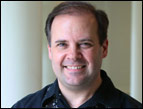 Craig von Buseck is Ministries Director of CBN.com.
Send
him your comments on this article. Craig von Buseck is Ministries Director of CBN.com.
Send
him your comments on this article.
CBN IS HERE FOR YOU!
Are you seeking answers in life? Are you hurting?
Are you facing a difficult situation?
A caring friend will be there to pray with you in your time of need.
|